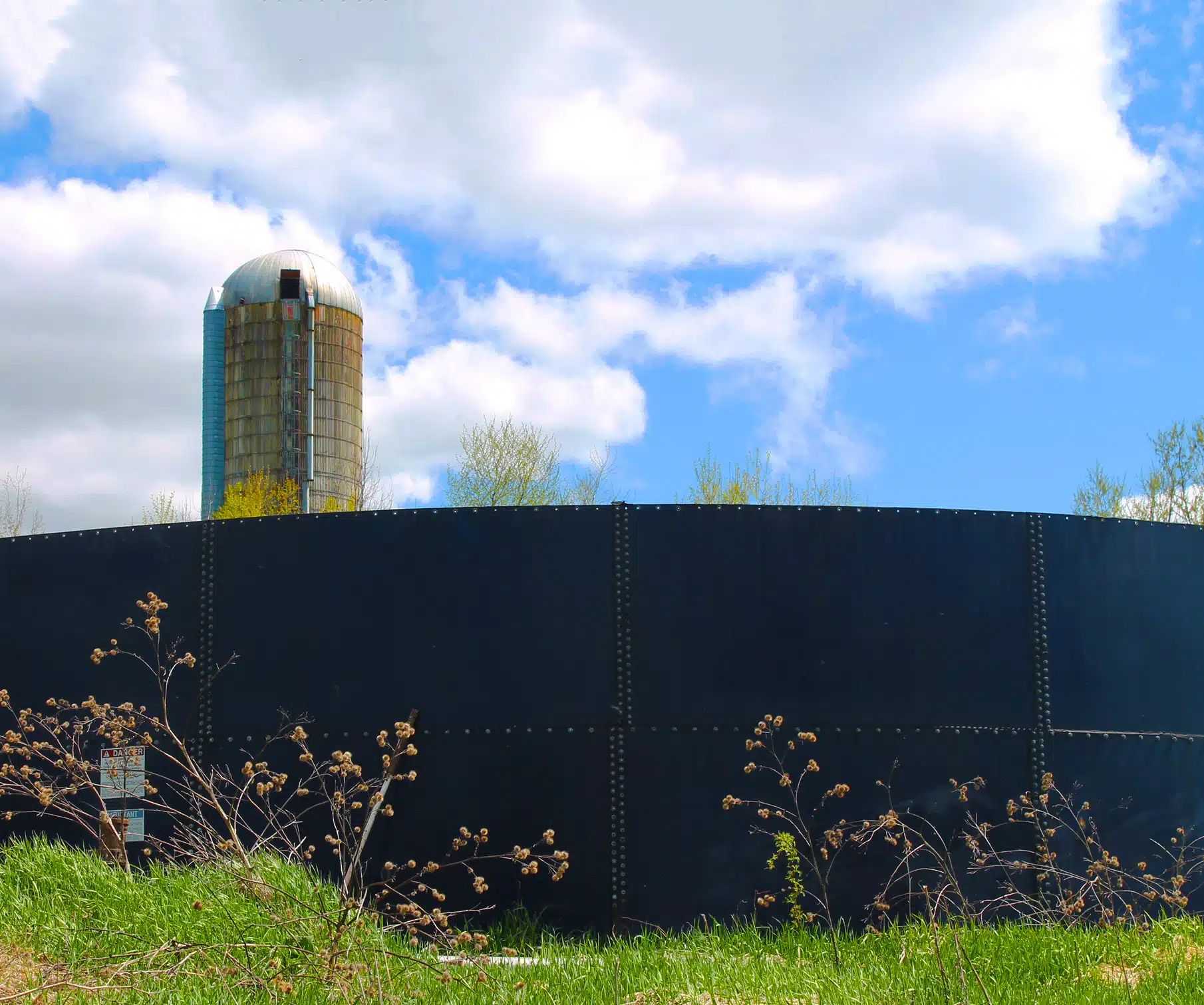Manure Confidential | The Farmer’s Life: Dispatches from Chickadee Farm in Craftsbury, Vermont
Julia Shipley from Chickadee Farm in Craftsbury, Vermont, describes a day in the life of a farmer picking up manure for her farm.

Coffee By Design | Portland, Maine
Photo Credit : Katherine Keenan
Photo Credit : Julia Shipley
First, let me back up and say my tolerance, nay, enthusiasm for mucky stuff is longstanding and perhaps unique. Once when I was a teenager visiting some friends with a backed-up septic system, I proposed a game to see who could get the closest to the basement’s effluent before being overcome. I was sure that, out of anyone, I could at least make it all the way down to the bottom step. At first I tried unassisted, but just three steps in I choked and retreated. The stink was an assault, slamming my lungs and sinuses. I tried again, but even with a dishrag clamped over my nose the stench was prohibitive. Nobody won.
That was nearly 30 years ago. A few summers back, however, I approached my own stink. Our plumbing was clogged, and so my new groom and I hunkered in our basement and used a device called a snake to bore through the obstruction. I watched as the ring I’d recently slid on his finger became lathered in black ooze. Repugnant as it is, this is nitrogen. Or at least one of its forms. And all life depends on it—and no garden thrives without it.
I learned almost everything I know about this essential element when I was in my early twenties, working as an apprentice at an organic farm in Williamstown, Massachusetts. Every morning before the others awoke, I pulled on my sweatshirt and jeans, plunged my feet into my muck boots, stole quietly out of the cabin, and traipsed up through the vegetable fields to the farmer’s house. For half an hour, in the strengthening light, I read The Rodale Book of Composting.
As others might read Bible passages, I studied an abecedarian text of organic forms of nitrogen, discovering how it’s found naturally in: alfalfa, apple pomace, bagasse (plant waste from the sugar mill), basic slag (formed when iron ore is smelted into pig iron), bone meal, buckwheat hulls, corn cobs, cottonseed meal, eggshells, felt waste, fish scrap, gin trash (cotton leaves and stems), granite dust, grape waste, grass clippings, greensand, guano, hair, hay, hoof and horn meal, hops, leather dust, leaves, milk, oyster shells, paper, pine needles, rinds, seaweed, tankage (refuse of an abattoir), tea grounds, water hyacinth, and wool waste.
My boss, Sam, was obsessive about nitrogen. As a certified organic farmer he was legally forbidden (and intellectually disinclined) to use commercial fertilizer—chemically manufactured nitrogen—on his fields. Yet he needed to replenish the soil that, year after year, produced food for more than 300 families. As I weeded and harvested the rows, I listened to the seemingly endless motorcade of trucks rumbling onto the property, delivering autumn leaves, restaurant waste, and processing by-products unto Sam’s vast and semi-sacred compost mounds. These he stirred with the passion of a chef concocting a soup stock. Using his tractor’s bucket loader, he layered and “cooked” a nitrogen-rich amendment for his vegetable beds. Meanwhile, he, and even I, knew what the true crème de la crème of nitrogen is: cow manure.
But moo doo is hard to come by. Most dairy farmers hoard their herds’ number two, storing it in silos and lagoons to spread upon hay fields. Therefore, the year after my Berkshire farm apprenticeship, when I became the gardener for a monastery of nuns, my first order of business was to befriend Frank, a generous dairyman.
After weeks of promising to stop by the monastery, Frank made good on his word. It was Easter Sunday, and I had joined the nuns for their feast in a room with a bank of windows overlooking the upper gardens. Sister Rita had just blessed the meal when, out of the corner of my eye, I saw Frank’s truck summit the driveway and screech to a halt. I had neglected to mention to the sisters my anticipation of this delivery. Consternation showed in their faces: Eyebrows arched, forks stilled. Beyond the window, Frank executed a three-point turn to position his enormous vehicle so that it could back into an area near the nuns’ outdoor sanctuary of flower and vegetable beds.
As the nuns stared, I quickly explained. Just then, Frank yanked the lever sending the truck bed tilting skyward and its cargo sliding south. Finally, gravity won, and a ton of gloppy cow dung came sledding to earth beside the raspberry patch.
Much like my former boss, I have since become an avid and adventurous composter. My property boasts complicated concoctions of vegetable scraps, egg shells, cider pomace, grass clippings, and pine needles, among other things that I stir regularly and incorporate into the vegetable beds. Recently, though, I couldn’t help noticing that a few of the steel panels on the neighbors’ old manure silo had been removed.
So I asked the neighbors, “Hey, would you mind…?” But they replied, “Sorry, no.” They’d just sold the whole silo of black gold to some guy named Macklin (not his real name). In the small world of our rural neighborhood, it just so happens that Macklin had bought a barn built in part by my husband but had neglected to pay the balance due. My husband’s boss took him to claims court; the chump never showed. Money was still owed.
My neighbors considered the matter and said, “Well, we won’t tell.” So we helped ourselves: shoveling life’s essential element into our buckets, dumping those buckets into the sled, then loading the sleds in the back of the Subaru and heading home, to render unto our garden the crème de la crème that technically belonged to Macklin.




